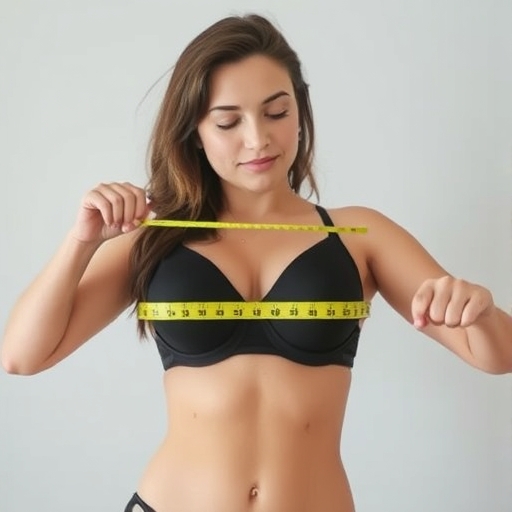Finding the right bra size is essential for comfort, support, and overall confidence. However, many women are unaware of how to measure their bra size accurately. This comprehensive guide will take you through the steps of measuring your bra size, the importance of wearing the right size, and address some common questions.
Why Is It Important to Know Your Bra Size?
Wearing the correct bra size is crucial for several reasons:
-
- Comfort: The right size helps avoid discomfort, including chafing, pinching, and digging.
- Support: A well-fitted bra provides adequate support to your breasts, preventing sagging and back pain.
- Aesthetics: The right bra can enhance your silhouette, making your clothes fit better.
- Health: Ill-fitting bras can lead to posture problems and other health issues.
Understanding Bra Size
Bra sizes typically consist of two components: the band size (the number) and the cup size (the letter). For example, a size 34B consists of a band size of 34 inches and a cup size of B.
Band Size
The band size is the measurement around your ribcage, just under your bust. It is usually an even number, ranging from 28 to 50.
Cup Size
The cup size represents the volume of your breasts. It is denoted by letters (A, B, C, D, etc.), with each letter indicating an increase in breast volume.
How to Measure Your Bra Size
Step 1: Gather Your Tools
Before you start measuring, gather the following tools:
-
- A soft measuring tape
- A pen and paper for notes
- A mirror (optional, but helpful)
Step 2: Measure Your Band Size
1. Stand Straight: Stand up straight and breathe normally.
2. Wrap the Tape: Use the measuring tape to measure around your ribcage, just under your bust. Ensure the tape is level and snug but not too tight.
3. Take the Measurement: Round the measurement to the nearest whole number. If it’s an odd number, add 1 inch to get your band size. For example, if you measure 31 inches, your band size will be 32.
Step 3: Measure Your Bust Size
1. Position the Tape: Wrap the measuring tape around the fullest part of your bust. Make sure the tape is parallel to the ground.
2. Ensure Comfort: The tape should be snug but not tight. Take a deep breath and relax your shoulders.
3. Take the Measurement: Record the measurement to the nearest whole number.
Step 4: Calculate Your Cup Size
1. Subtract the Band Size from Bust Size: Use the measurements you recorded to calculate your cup size.
-
- For example, if your bust measurement is 36 inches and your band size is 32 inches, the difference is 4 inches.
2. Determine the Cup Size: Use the following scale to determine your cup size:
| Difference (inches) | Cup Size |
|---|---|
| 1 | A |
| 2 | B |
| 3 | C |
| 4 | D |
| 5 | DD/E |
| 6 | DDD/F |
| 7 | G |
| 8 | H |
Step 5: Combine Your Measurements
Combine your band size and cup size for your final bra size. Using the previous example, a band size of 32 and a cup size of D results in a bra size of 32D.
Tips for Accurate Measurement
-
- Wear a Bra: It’s often helpful to wear a non-padded bra while measuring, as this can provide a more accurate bust measurement.
- Double Check: Measure a couple of times to ensure accuracy.
- Consider Different Brands: Sizes can vary between brands, so it’s essential to try on bras even if you know your size.
Common Bra Size Mistakes
Understanding common mistakes can help you avoid issues with bra fitting:
-
- Incorrect Band Size: Many women wear band sizes that are too large, which can lead to inadequate support.
- Ignoring Cup Size: Cup size is just as important as band size; both need to fit well for overall comfort.
- Not Considering Changes: Body changes due to weight fluctuations, pregnancy, or hormonal changes can affect your bra size.
When Should I Get Measured?
It’s advisable to measure your bra size:
-
- After significant weight changes (loss or gain)
- After pregnancy or breastfeeding
- If your bras feel uncomfortable or don’t provide adequate support
- At least once a year
FAQs About Bra Sizing
How Do I Know If My Bra Fits Correctly?
A well-fitting bra should:
- Sit level around your body without riding up.
- Have the band snug but comfortable.
- Allow you to fit two fingers under the band.
- Fully encase your breasts without spilling over or leaving gaps.
Can My Bra Size Change?
Yes, your bra size can change due to various factors, including weight loss or gain, hormonal changes, and aging. Regularly measuring your size is important to ensure you are wearing the correct size.
What Are Sister Sizes?
Sister sizes are alternative bra sizes that fit the same but differ in band and cup size. For example, if you wear a 34B, your sister sizes would be 32C and 36A.
How Often Should I Replace My Bra?
On average, bras should be replaced every 6 to 12 months, depending on how frequently you wear them and how well you care for them.
Conclusion
Knowing how to measure your bra size is essential for finding the right fit, which can significantly enhance your comfort and confidence. By following the steps outlined in this guide, you can ensure that you are wearing the correct size and receiving the support that your body needs. Don’t forget to reevaluate your size regularly, as your body can change over time.
Finding the perfect bra is not just about the size; it’s about feeling good in your skin!





